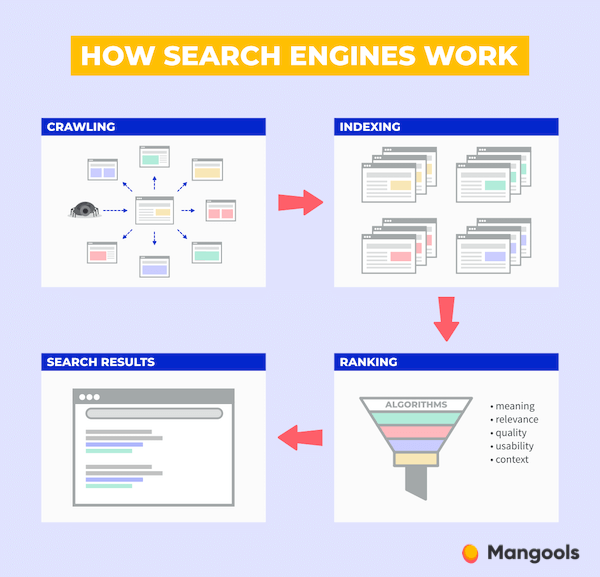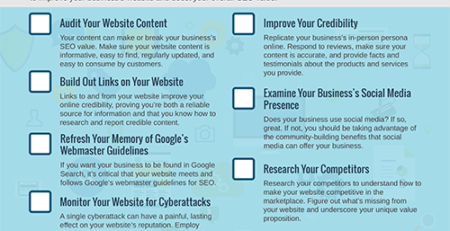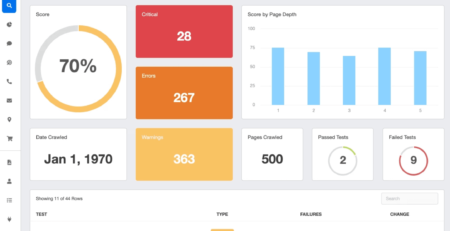How Do Search Engines Use Sitemaps?
Welcome to the world of search engines and sitemaps! 🌍 In this article, we’re going to dive into the fascinating question: “How Do Search Engines Use Sitemaps?” So, buckle up and get ready for an exciting journey into the inner workings of search engine optimization!
Imagine search engines as your friendly internet detectives, constantly exploring the vast online world, looking for the best and most relevant content to serve to curious users like you. 🕵️♀️ But how do these search engine detectives find their way around? That’s where sitemaps come in!
Think of sitemaps as a helpful map guiding search engines through the maze of the internet. They provide a clear outline of your website’s structure, showing the search engine bots which pages to explore and how they’re all connected. It’s like giving directions to your favorite hidden spots in a giant amusement park! 🎢 So, let’s uncover the secrets of how search engines use sitemaps to navigate and deliver the best results to the right people at the right time.
Sitemaps play a vital role in helping search engines navigate and index your website effectively. By providing a clear structure of your site’s content, search engines can easily discover and understand your web pages. They use sitemaps to crawl and prioritize pages for indexing, ensuring that your most important content gets the attention it deserves. Sitemaps also enable search engines to identify any changes or updates to your site, helping them keep their search results accurate and up-to-date.
How Do Search Engines Use Sitemaps?
Welcome to our in-depth guide on how search engines use sitemaps to crawl and index websites. In this article, we’ll explore the importance of sitemaps in search engine optimization (SEO) and how they help search engines understand the structure and content of a website. Whether you’re a website owner, marketer, or SEO professional, understanding how search engines use sitemaps can greatly improve your website’s visibility and rankings in search results.
The Role of Sitemaps in SEO
Sitemaps play a crucial role in SEO by providing search engines with a roadmap of your website’s structure and content. When search engines crawl your website, they rely on sitemaps to discover and index pages that may otherwise be difficult to find. Sitemaps act as a communication tool between website owners and search engines, ensuring that all web pages are properly crawled and indexed.
There are various types of sitemaps, including HTML sitemaps that are visible to website visitors and XML sitemaps that are specifically designed for search engines. XML sitemaps are the most important for SEO purposes, as they provide search engines with comprehensive information about your website’s URLs, their priority, and the frequency of updates.
By submitting an XML sitemap to search engines, you’re essentially providing them with a blueprint of your website, enabling them to navigate and understand your content more effectively. This not only helps search engines crawl and index your web pages accurately, but also improves the overall visibility and rankings of your website in search results.
The Benefits of Using Sitemaps
1. Improved Indexing and Crawling: Sitemaps help search engines discover and crawl all the pages on your website. This is particularly beneficial for large websites with numerous pages, as search engines may not be able to find and index every page without a sitemap.
2. Faster Indexing of New Content: When you create new web pages or publish fresh content, sitemaps help search engines find and index them quickly. Instead of waiting for search engine bots to discover new pages organically, sitemaps ensure that your new content is crawled and indexed promptly.
3. Accurate Page Prioritization: Sitemaps allow you to specify the priority of different web pages on your site. By assigning priority levels to each URL, you can inform search engines about the importance of certain pages, ensuring that they are crawled and indexed appropriately.
4. Improved User Experience: Sitemaps not only benefit search engines, but they also enhance the user experience by providing website visitors with an organized and structured view of your site. HTML sitemaps can act as a navigation tool, helping users easily find the information they’re looking for.
In summary, sitemaps play a crucial role in SEO by helping search engines understand your website’s structure and content. By properly utilizing sitemaps, you can improve your website’s indexing, crawling, and overall visibility in search results.
How to Create an XML Sitemap for Your Website
Now that you understand the importance of sitemaps in SEO, let’s discuss how to create an XML sitemap for your website:
Step 1: Choose a Sitemap Generator
There are several online tools and plugins available that can generate XML sitemaps for your website. Some popular options include Yoast SEO (for WordPress websites), Screaming Frog, and XML-Sitemaps.com. Choose a sitemap generator that suits your needs and follow the instructions provided by the tool.
Step 2: Identify the URLs to Include
Ensure that all the important URLs on your website are included in your sitemap. This includes your homepage, key landing pages, blog posts, product pages, and any other web pages that you want to be indexed by search engines. Prioritize the URLs based on their importance and update frequency.
Step 3: Generate the XML Sitemap
Using the chosen sitemap generator, input the URLs you want to include and customize any settings as needed. Once you’re satisfied with the configuration, generate the XML sitemap. The tool will provide you with a downloadable file that you can save as “sitemap.xml.”
Step 4: Submit the Sitemap to Search Engines
Next, submit your XML sitemap to search engines through their respective webmaster tools. This tells search engines that you have a sitemap ready for them to crawl and index. Each search engine has its own process for submitting sitemaps, so refer to their documentation for specific instructions.
Step 5: Monitor for Errors and Updates
Regularly monitor your sitemap for errors and make updates whenever necessary. If you add new pages or make changes to existing ones, update your sitemap accordingly and resubmit it to search engines. Keeping your sitemap up to date ensures that search engines have the latest information about your website.
Step 6: Test and Validate the Sitemap
Before submitting your sitemap, it’s important to test and validate it to ensure that it meets search engine standards. There are various online tools and plugins available that can help you validate your XML sitemap and identify any issues that need to be resolved.
By following these steps, you’ll be able to create and submit an XML sitemap for your website, improving its visibility and rankings in search results.
Tips for Optimizing Your Sitemaps
Now that you know how to create an XML sitemap, let’s explore some tips for optimizing your sitemaps and maximizing their impact on your SEO efforts:
1. Keep Your Sitemap Updated
To ensure that search engines have the most up-to-date information about your website, regularly update your sitemap whenever you add new pages, make changes to existing ones, or remove outdated content. Keeping your sitemap updated helps search engines crawl and index your website more effectively.
2. Prioritize Important URLs
Assign priority levels to your URLs within the sitemap to inform search engines about the importance of each page. This helps search engines understand which pages they should crawl and index first. Prioritize pages based on their relevance, authority, and value to your website.
3. Include All Canonical URLs
If your website uses canonical tags to address duplicate content issues, ensure that the canonical URLs are included in your sitemap. This helps search engines understand the preferred version of each page and avoids confusion when crawling and indexing your content.
4. Use Accurate Last Modified Dates
Within your XML sitemap, each URL can include a last modified date. It’s important to ensure that these dates accurately reflect the last time the respective web page’s content was updated. This information helps search engines determine how frequently they should crawl and index each page.
5. Consider Multilingual and Multi-Regional Sitemaps
If your website caters to an international audience and has multiple language versions or regional variations, consider creating separate sitemaps for each. This allows you to provide search engines with specific information about each version, improving the visibility of your website in different regions and languages.
By following these optimization tips, you can maximize the impact of your sitemaps on your SEO efforts and improve the visibility of your website in search engine results.
Common Myths About Sitemaps
There are several myths and misconceptions surrounding sitemaps. Let’s debunk some of the most common ones:
Myth 1: Sitemaps Guarantee Higher Rankings
While sitemaps are important for ensuring proper crawling and indexing of your website, they do not directly influence your rankings in search results. Sitemaps can improve visibility by helping search engines find and index all your web pages, but they are just one of many factors that search engines consider when determining rankings.
Myth 2: Including URLs in a Sitemap Guarantees Indexing
Although sitemaps help search engines discover and crawl your URLs, inclusion in a sitemap does not guarantee indexing. Search engines still prioritize high-quality and relevant content when deciding which pages to index. Sitemaps simply provide a tool for search engines to navigate your website more efficiently.
Myth 3: XML Sitemaps Improve Page Authority
Sitemaps, including XML sitemaps, do not directly improve your page authority or ranking signals. Page authority is determined by various factors, such as backlinks, content quality, and user engagement. While sitemaps can assist search engines in discovering and understanding your content, they do not affect the underlying factors that contribute to page authority.
Conclusion
Sitemaps play a vital role in helping search engines understand the structure and content of your website. By submitting XML sitemaps, you provide search engines with a roadmap to navigate and index your web pages effectively. Sitemaps improve crawling and indexing, resulting in improved visibility and rankings in search results. Remember to regularly update and optimize your sitemaps to maximize their impact on your SEO efforts. Now that you have a better understanding of how search engines use sitemaps, go ahead and create one for your website to improve its online presence.
Key Takeaways: How Do Search Engines Use Sitemaps?
- Search engines use sitemaps to understand the structure of a website.
- Sitemaps help search engines discover and index all the pages on a website.
- Sitemaps make it easier for search engines to crawl and rank a website’s pages.
- Sitemaps also provide valuable metadata about each page, such as the last modified date.
- Having an up-to-date sitemap can improve a website’s visibility in search engine results.
Frequently Asked Questions
Curious about how search engines use sitemaps? Check out these common questions and their answers below.
1. Why are sitemaps important for search engines?
Sitemaps serve as a roadmap for search engines to discover and understand the content on your website. They provide a hierarchical structure of your site’s pages, making it easier for search engines to crawl and index. By submitting a sitemap to search engines, you increase the chances of your website’s pages being included in search results.
Moreover, sitemaps can be especially valuable if your website has a large number of pages, is newly published, or contains pages with dynamic content that might not be easily discoverable through traditional crawling methods. Overall, sitemaps help search engines effectively understand and display your website’s content to users.
2. How do search engines use sitemaps to crawl and index webpages?
When a search engine comes across a sitemap, it extracts important information about the pages on your website, such as their URLs, last modification dates, and the frequency of updates. This enables search engines to prioritize crawling and indexing your webpages accordingly.
By following the URLs listed in the sitemap, search engines can quickly navigate through your website’s content, identifying new or updated pages. Sitemaps also provide search engines with metadata, such as the importance of each page or its preferred language, which helps them determine how to best present your website in search results. Ultimately, sitemaps streamline the crawling and indexing process for search engines, making it more efficient and accurate.
3. Should I submit a sitemap to search engines if my website has a small number of pages?
Yes, it is still beneficial to submit a sitemap to search engines even if your website has a small number of pages. While search engines are capable of discovering webpages through other methods, such as internal links, submitting a sitemap ensures that all of your website’s pages are properly crawled and indexed.
Additionally, even if your website is small now, it might grow in the future. By already having a sitemap in place, you are prepared for expansion and can easily inform search engines about any new or updated content. It’s a proactive approach that can improve the visibility of your website in search results.
4. Are there any specific requirements for creating a sitemap for search engines?
Yes, there are a few requirements to keep in mind when creating a sitemap for search engines. Firstly, the sitemap should be in XML format, which is a standard format for communicating structured data. Additionally, the sitemap should follow a specific schema, known as the Sitemap Protocol, which outlines the necessary elements and syntax for a valid sitemap.
When creating the sitemap, ensure that it includes all relevant pages and follows a logical hierarchy. It’s important to provide accurate and up-to-date information, such as the last modification date and the frequency of updates for each page. Following these guidelines will help search engines effectively interpret and utilize your sitemap.
5. Should I notify search engines every time my sitemap is updated?
While it’s not necessary to notify search engines every time your sitemap is updated, it’s a good practice to resubmit your sitemap whenever you make significant changes to your website’s content or structure. This ensures that search engines are aware of the updates and can crawl and index your pages accordingly.
Keep in mind that search engines also follow a crawl budget, which determines how frequently they crawl your website. Therefore, submitting a sitemap alone does not guarantee immediate indexing. However, resubmitting your sitemap when needed helps search engines stay informed about your website’s changes and can expedite the crawling process.
SEO Tutorial – XML sitemaps for search engines
Summary
Search engines like Google use sitemaps to understand and crawl websites more effectively. A sitemap is like a map that helps search engines navigate through all the pages on a website. It lists all the URLs in a structured format, making it easier for search engines to discover and index new content. Sitemaps also provide additional information about each URL, such as when it was last updated. This helps search engines prioritize crawling and ensures that fresh content is indexed quickly. By using sitemaps, websites can improve their visibility in search engine results and attract more visitors.
Overall, sitemaps are a valuable tool for website owners to help search engines better understand their content and improve their website’s visibility. It’s important for website owners to regularly update and submit their sitemaps to search engines to ensure that all their new content is indexed properly. By making it easier for search engines to find and crawl their pages, website owners can increase their chances of ranking higher in search results and attracting more organic traffic.











